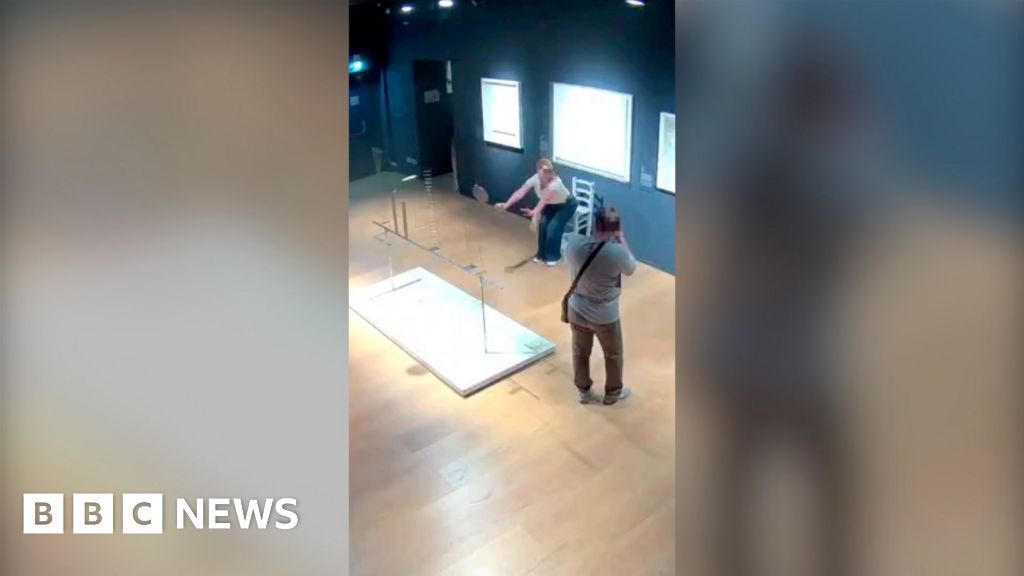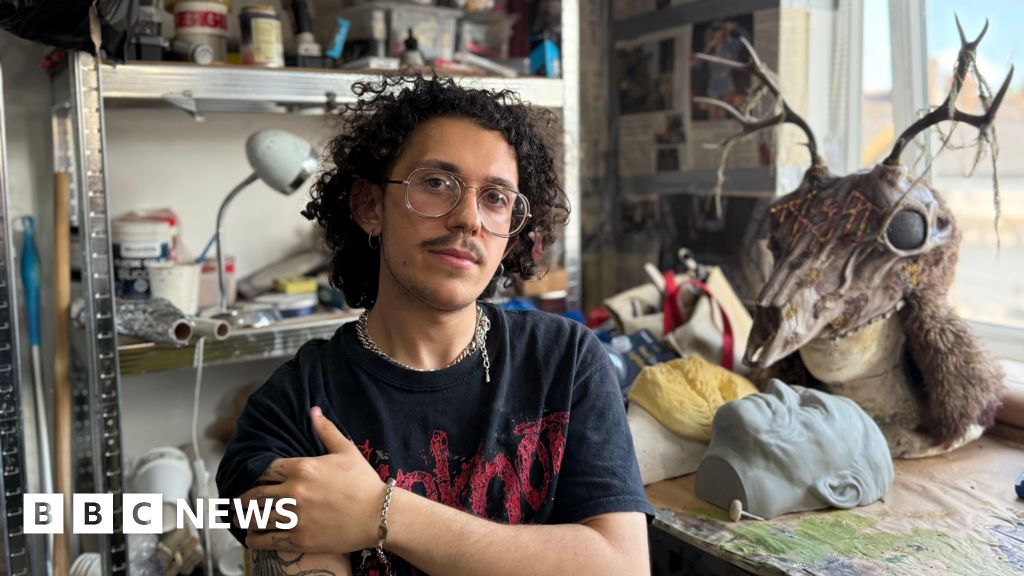ARTICLE AD BOX

 Alamy/Comedy Central/Everett Collection
Alamy/Comedy Central/Everett Collection
Timmy (left), who uses a wheelchair, first appeared on the show in 2000
I can feel the anger rising. How am I facing this abuse again after 20 years?
My name is Alex. But increasingly young people shout “Timmy” at me in the street. This isn’t mistaken identity - it‘s mockery because I use a wheelchair.
I should ignore it, but this time, I react. I turn to see a group of young teenage boys smirking in front of me. “I heard you,” I tell them. “I know exactly who Timmy is.”
I know this because although we do not share a name, I have felt the shadow of Timmy since childhood - never through choice.
A disabled character from dark-humoured satire cartoon series South Park, he uses a wheelchair and can only shout his name, mainly loudly and uncontrollably.
Growing up at the show’s initial peak during the turn of the millennium, Timmy followed me through school corridors, classrooms and playgrounds - no matter my friends, sociability or relatively good grades.
Now, in my 30s, he’s back. For the third time in a year, this time heading to my local train station in my wheelchair, I hear the familiar, brutish drawl: “Timmaaah.”
A laugh. A snigger. An assumption I either won’t hear or be unable to understand.
When I confront the group of boys, one feigns innocence, claiming he’d been speaking to his friend.
“You weren’t,” I say. “I was watching the show before you were born.”

 Emma Lynch/BBC
Emma Lynch/BBC
Initially I was baffled as to how this phenomenon had returned to a new young generation, 24 years after the character first appeared.
The answer lies in social media, particularly TikTok, where hundreds of short user-edited clips of Timmy and audio of him saying his name are sparking the revival.
TikTok users often take part in trends by using the audio of popular videos and overlaying it with their own clips.
That’s what many have done with Timmy, where the name is used as a punchline, or played on top of unrelated clips of wheelchair users, reinforcing harmful and dehumanising stereotypes.
The irony is that the character Timmy is presented with warmth in South Park and given character depth by co-creators Matt Stone and Trey Parker.
An equal in the show’s unflinching satire, his disability isn’t necessarily the brunt of the joke.
Timmy is an accepted member of the class: he fails to complete homework, faces adversity and causes trouble with his disabled best friend Jimmy. His personality is conveyed through the different intonations in which he delivers his name.
One episode, Timmy 2000, sees him win a battle of the bands as frontman for a metal group. The adult characters are shown to respond in an over-protective and condescending way - a striking criticism of the way society often treats disabled people.
Nearly 20 years ago, a poll by Ouch! - the former name of the BBC’s disability section - crowned Timmy as the most popular disabled TV character.
Seattle Times’ late disabled critic Jeff Shannon described Timmy as the most “progressive, provocative and socially relevant disability humour ever presented on American television”.
“Without telling viewers what to think, South Park challenges [the audience’s] own fears and foibles regarding disability, and Timmy emerges triumphant,” he wrote in 2005.
In interviews Stone and Parker have spoken of how carefully and purposefully they integrated him into the show.
But two decades later, the fact remains that on meeting Timmy, certainly at first glance, many find him outrageously offensive.
South Park has always worked on multiple levels - offering outrageous forbidden shock value for schoolchildren while delivering crunching adult satire.
None of this nuance is reflected in the TikTok trend, which reduces Timmy, and by extension wheelchair users and disability, to one-dimensional ridicule.
This warped revival parallels the case of Joey Deacon, a man with cerebral palsy whose appearance on Blue Peter in the 1980s backfired to spark playground mockery, with kids shouting “you're a Joey!”, and “do the Joey face”.
TikTok says its community guidelines strictly prohibit hate speech and content promoting discrimination, violence or harm based on disability.
It removed the videos flagged by the BBC for violating this policy. But it didn’t remove the Timmy sound used on several other videos - meaning it can be used again.
TikTok didn’t respond to a specific question about removing offensive audio.
Ciaran O’Connor, from the Institute for Strategic Dialogue (ISD), a think tank focusing on online hate, says that sounds are a “blind spot in TikTok’s content moderation practices”.
Even if a video with an “original sound” is removed by the platform, the audio usually isn’t, he says.
This makes it a common way of bypassing TikTok’s content moderation guidelines - including for harassment and abuse.
Bullying and trolling of disabled people is still common online. Three in 10 said they’d experienced it in a survey of 4,000 disabled people carried out by charity Scope.

 Alamy/Comedy Central/Everett Collection
Alamy/Comedy Central/Everett Collection
Many find Timmy's character (left) offensive at first glance, but his plots in South Park often challenge discrimination against disabled people
My last experience of having the name hurled at me on the street shocked me not so much in the name-calling, but the absolute lack of contrition shown even when challenged.
It mirrored an experience last year when teenagers, again taunting me, rode off shouting “Timmy is going to run us over.”
Ross Hovey, a wheelchair user and Liverpool fan, recently posted on LinkedIn about a near-identical experience.
He was heading to a Liverpool match with his 79-year-old father and care assistant when a group of young men shouted "Timmy" at him. When Ross challenged them with “I heard you,” they too tried to claim innocence.
The abuse raises questions about what role platforms should take in providing context to young users.
“Brief, contextless clips and participatory trends are at the heart of TikTok’s popularity,” says O’Connor.
“That’s normally good and positive and funny … but when these dynamics are being used to demean, mock or stigmatise others, it does raise the question of whether TikTok should be doing more to inform or educate users.”
Alison Kerry, head of communications at Scope, told the BBC "these kinds of ableist trends are deeply harmful. They don’t exist in a vacuum, so a social media trend can quickly turn into someone facing abuse in their everyday life.”

 Ross Hovey
Ross Hovey
Ross Hovey, who also faced Timmy taunts, with former Liverpool and England captain Steven Gerrard
The real-world impact is certainly becoming more noticeable.
Disabled TikTokers have been posting about their experiences, and a teacher recently wrote a Reddit thread titled “Getting real sick of this Timmy trend”, expressing frustration at students' lack of awareness.
This is why I challenged the teens at the station - I felt a duty not only to my 12-year-old self, who once burst into tears feeling helpless at similar taunts, but also to disabled students today.
I returned a second time when the boys called out “Timmy” again after I turned to leave.
“Why?” I asked forcefully. Silence. One of the group eventually apologised, admitting the behaviour was wrong.
“Speak to your friends,” I pleaded, sensing a glimmer of hope. “Maybe then they’ll listen.”

 7 months ago
23
7 months ago
23








 English (US) ·
English (US) ·